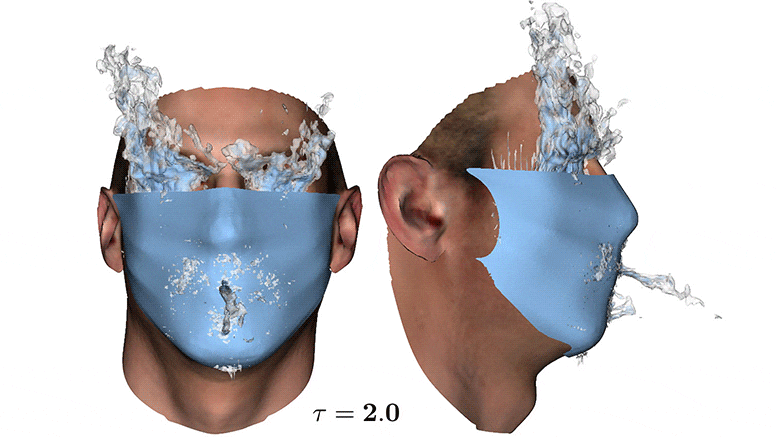
Time evolution of cough while wearing a face mask. Credit: Tomas Solano
Proper Fit Crucial for Optimal Mask Protection
Face shape influences mask fit, suggests problems with double masking against COVID-19.
In its updated guidance at the start of 2022, the U.S. Centers for Disease Control and Prevention (CDC) said loosely woven cloth masks offer the least protection against COVID-19, and N95 and KN95 masks offer the most protection. Still, after more than two years since the pandemic began, there is not a full understanding of mask characteristics for the most optimal protection.
In Physics of Fluids, published by AIP Publishing, researchers at Florida State University and Johns Hopkins University use principal component analysis (PCA) along with fluid dynamics simulation models to show the crucial importance of proper fit for all types of masks and how face shape influences the most ideal fit.
The study suggests double masking with improperly fitted masks may not significantly improve mask efficiency and produces a false sense of security.
More layers mean a less porous face covering, leading to more flow forced out of the perimeter gaps (sides, top, and bottom) in masks with a less secure fit. Double layers increase filtering efficiency only with good mask fit but could also lead to breathing difficulties.
The researchers modeled a moderate cough jet from a mouth of an adult male wearing a cloth mask over the nose and mouth with elastic bands wrapped around the ears. They calculated the maximum volume flow rates through the front of mask and peripheral gaps at different material porosity levels.
For a more realistic 3D face shape and size, the researchers used PCA that integrated 100 adult male and 100 adult female heads retrieved from head scan data at Basel University in Switzerland. PCA condenses large sets of variables while retaining most of the information.
Their model showed how the slight asymmetry typical in all facial structures can affect proper mask fitting. For example, a mask can have a tighter fit on the left side of the face than on the right side.
“Facial asymmetry is almost imperceivable to the eye but is made obvious by the cough flow through the mask,” said co-author Tomas Solano, from Florida State University. “For this particular case, the only unfiltered leakage observed is through the top. However, for different face shapes, leakage through the bottom and sides of the mask is also possible.”
Creating “designer masks” customized to each person’s face is not practical at scale. Still, PCA-based simulations can be used to design better masks for different populations by revealing general differences between male and female or child versus elderly facial structures and the associated airflow through masks.
Reference: “Perimeter leakage of face masks and its effect on the mask’s efficacy” by Tomas Solano, Chuanxin Ni, Rajat Mittal and Kourosh Shoele, 3 May 2022, Physics of Fluids.
DOI: 10.1063/5.0086320

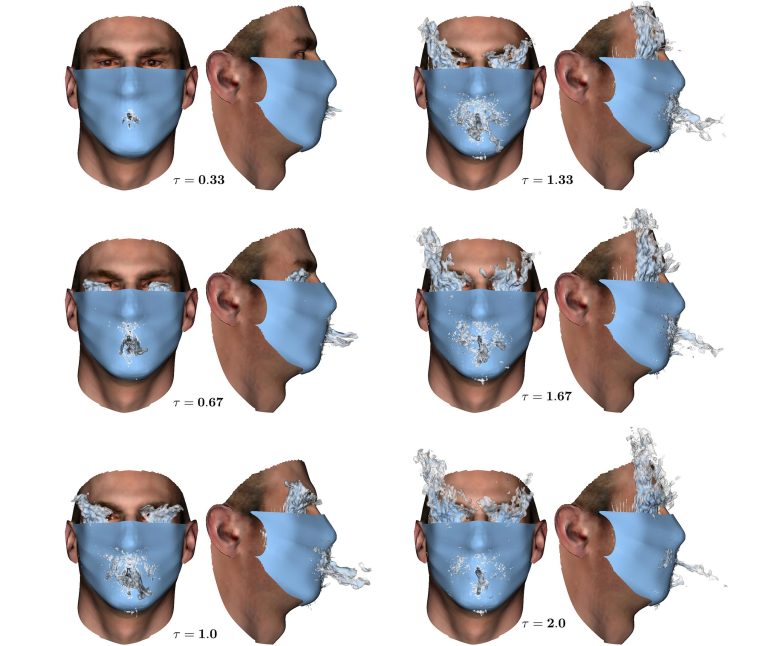

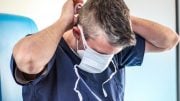

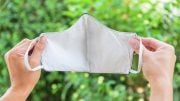
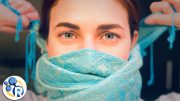
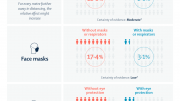
I would like to unsubscribe. please inform me how to do so!
Thanks
This is all BS. Masks cannot filter below 10 microns. Coronaviruses are 1 micron or smaller and circulate with impunity. They cannot be stopped. Research HKU1 and ask yourselves why we didn’t shut down the economy in 2019 and force vaccinations in people, fire them, place Covid positive elderly in locations that couldn’t manage the virus or close businesses. But they can and have become another whole new “industry” once the medical profession and government got together it seems.